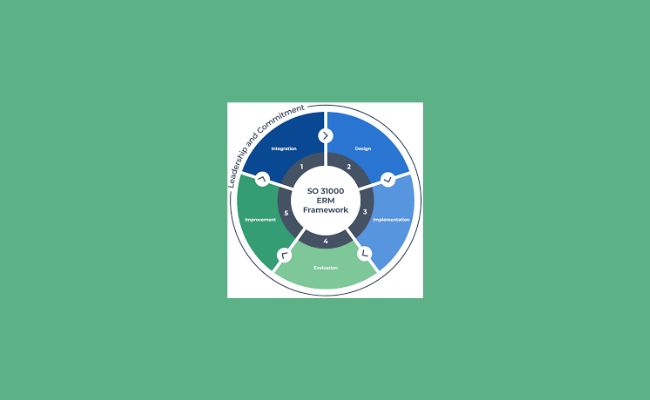Executive Summary

This case study details the adoption of the ISO 31000 Risk Management Framework by a global manufacturing company to address its fragmented and inconsistent risk management practices. Prior to implementation, the company faced challenges including operational inefficiencies, regulatory non-compliance, reputational damage, and financial losses due to poorly managed risks. These issues highlighted the urgent need for a comprehensive, organization-wide risk management framework.
The company adopted ISO 31000, an internationally recognized risk management standard, to unify its approach to identifying, assessing, and mitigating risks. The implementation process involved securing leadership commitment, developing a risk management policy, creating a centralized risk register, standardizing methodologies, and training employees. Additionally, the company leveraged technology to enhance risk visibility and monitoring capabilities.
Post-implementation, the company achieved significant improvements, including enhanced compliance with regulations, reduced risk-related incidents, improved operational efficiency, and increased stakeholder confidence. Despite challenges such as initial resistance and high implementation costs, the long-term benefits far outweighed the limitations.
This case study provides an in-depth analysis of the implementation process, results, limitations, and key recommendations, offering valuable insights for organizations seeking to adopt a robust risk management framework.
Introduction
Effective risk management is critical for organizations to navigate uncertainties, ensure resilience, and achieve long-term sustainability. The global manufacturing industry, with its complex supply chains, strict regulatory requirements, and reliance on advanced technology, is particularly vulnerable to risks such as supply chain disruptions, safety incidents, and cybersecurity threats.
This case study examines how a leading global manufacturing company identified gaps in its existing risk management practices and adopted the ISO 31000 Risk Management Framework to address these challenges. The ISO 31000 framework provides principles, guidelines, and a structured process to manage risks effectively, enabling organizations to align risk management with their strategic objectives.
The company’s task was to integrate the ISO 31000 framework across all functions and processes to establish a unified, proactive approach to risk management. This included addressing specific challenges such as fragmented risk practices, compliance issues, and a lack of centralized risk visibility.
Definition of Key Terms
1. Risk Management Framework (RMF):A structured and standardized approach to managing risks across an organization.
2. ISO 31000:An international standard for risk management that offers principles and best practices applicable to all organizations, regardless of size or industry.
3. Risk Appetite: The level of risk an organization is willing to accept to achieve its objectives.
4. Risk Register: A centralized document used to record, evaluate, and monitor identified risks.
5. Key Risk Indicators (KRIs):Metrics that provide early warning signals about potential risks.
The Problem
Challenges Faced by the Company:
The manufacturing company operated in multiple locations with varying risk management practices, leading to the following issues:
1. Fragmented Processes: Different departments managed risks independently, resulting in duplication of efforts and inefficiencies.
2. Compliance Challenges: Regulatory violations occurred due to inconsistent risk assessment methods, leading to fines and reputational damage.
3. Operational Inefficiencies: Decision-making processes were delayed due to a lack of risk prioritization and coordination.
4. Reputational Risks: Frequent safety incidents and supply chain disruptions harmed the company’s credibility among stakeholders.
5. Data Silos: The absence of a centralized risk register meant risks were not visible across the organization, creating gaps in accountability.
The Solution
The company adopted the ISO 31000 Risk Management Framework to standardize and streamline its risk management processes. The following steps were implemented:
1. Leadership Commitment:
- The board of directors and senior management demonstrated strong support for the initiative by prioritizing risk management in the corporate agenda.
- A Chief Risk Officer (CRO) was appointed to oversee the implementation process.
2. Development of a Risk Management Policy:
- A formal risk management policy was developed, outlining objectives, roles, and responsibilities.
- The company’s risk appetite and tolerance levels were clearly defined to guide decision-making.
3. Risk Identification and Assessment:
- Cross-functional workshops were conducted to identify risks in all departments, including production, supply chain, finance, and IT.
- Risks were documented in a centralized risk register, categorizing them by likelihood and potential impact.
4. Standardized Methodologies:
- A consistent process for risk assessment, evaluation, and mitigation was established based on ISO 31000 principles.
- Key Risk Indicators (KRIs) were introduced to track risks and provide early warnings.
5. Integration with Operations:
- Risk management activities were embedded into daily operations, ensuring that risks were addressed proactively.
- Aligning risk management with strategic objectives enabled better decision-making.
6. Employee Training and Communication:
- Comprehensive training programs were conducted to build a risk-aware culture among employees.
- Regular updates and workshops ensured consistent communication about risk management initiatives.
7. Technology Adoption:
- A cloud-based risk management platform was implemented to track, analyze, and report risks in real-time.
The Results
1. Quantitative Outcomes:
- Compliance: Achieved 100% compliance with industry regulations within six months, avoiding penalties and legal issues.
- Risk Reduction: Safety incidents and supply chain disruptions decreased by 30% within the first year.
- Efficiency Gains: Decision-making improved due to better risk prioritization, reducing delays by 25%.
- Financial Impact: Cost savings from reduced incidents and streamlined processes totaled $2.5 million in the first year.
2. Qualitative Outcomes:
- Stakeholder Confidence: Enhanced trust among investors, suppliers, and regulatory bodies.
- Improved Reputation: The company regained its status as an industry leader in safety and operational excellence.
- Employee Engagement: Employees reported higher morale and confidence in the organization’s ability to manage risks.
Limitations
1. Initial Resistance: Employees initially resisted the changes, fearing added workload and disruption to established practices.
2. Implementation Costs: Significant financial investment was required for training, technology, and consulting services.
3. Time-Intensive: The implementation process spanned over a year, requiring sustained effort and resources.
4. Ongoing Challenges: Maintaining and updating the risk register required continuous monitoring and effort.
Conclusion
The adoption of ISO 31000 transformed the company’s approach to risk management, moving from reactive to proactive practices. The implementation enhanced compliance, improved operational efficiency, and strengthened stakeholder confidence. Although challenges were encountered during the process, the overall impact demonstrated the value of a unified and systematic risk management framework. The company’s experience serves as a model for organizations seeking to achieve resilience and sustainability through effective risk management.
Discussion: Major Problems Summarized
1. Inconsistent risk practices across departments created inefficiencies and compliance risks.
2. Lack of centralized risk visibility hindered decision-making.
3. Fragmented processes led to duplication of efforts and higher costs.
Recommendations / Key Learnings and Takeaways
1. Leadership Commitment: Strong leadership is critical for driving change and overcoming resistance.
2. Custom Framework Design: Tailor the risk management framework to fit the organization’s unique needs.
3. Engaging Employees: Involving employees at all levels ensures smoother implementation and acceptance.
4. Technology Integration: Advanced tools can streamline processes and improve risk visibility.
Continuous Monitoring: Regularly review and update the framework to adapt to changing risks and business environments.
References
1. ISO 31000:2018. Risk Management – Guidelines. International Organization for Standardization.
2. Jones, D. (2023). Effective Risk Management Frameworks. Harvard Business Review.
3. Anderson, T. (2024). The Role of Risk Management in Operational Excellence. Journal of Risk Management.


